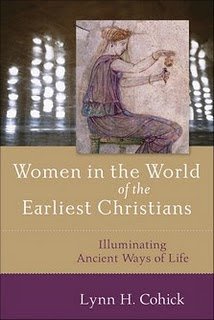Great Resource
I just finished reading an academic book about first-century backgrounds that I highly recommend.
Piecing together literary, archaeological, epigraphic, and iconographic evidence from classic, Jewish, and Christian sources, Dr. Lynn Cohick, who teaches New Testament at Wheaton, has built a fascinating mosaic of first-century daily life in family, religion, and society. But she doesn’t stop there. She goes on to illuminate women in the New Testament in light of what we now know about both scripture and their cultures.
So, for example, Cohick raises the question of whether the Samaritan woman was actually an upright woman who was possibly dumped and/or widowed and then remarried to a man with another wife. Others have raised this question previously. But never has the possibility seemed more credible. Cohick also explores the possibility that in the same way Silas and Silvanus are probably the same person, Junia and Joanna might be the same. I was a skeptic when I started reading, but now I’m pretty convinced.
Most of the book, though, focuses not on specific Bible characters but on telling readers about the world in which those characters lived. And in that, I found some surprises. I always thought, for example, that women in antiquity who married were then under the complete authority of their husbands. But apparently they stayed under the tutelage of their fathers (or a male biological family member). The fathers could even dissolve marriages to form stronger alliances elsewhere. Yet thanks to Caesar Augustus, if a woman gave birth to three children, the tutorship ended.
Cohick directs her well reasoned arguments to an academic audience, but they’re accessible enough for anyone interested in antiquity and topics such as marriage, dowries, adoption, worship practices, and patronage. If you love history, exploring women of the Bible and the world in which they lived, and/or books by smart women, this book belongs on your wish list.
